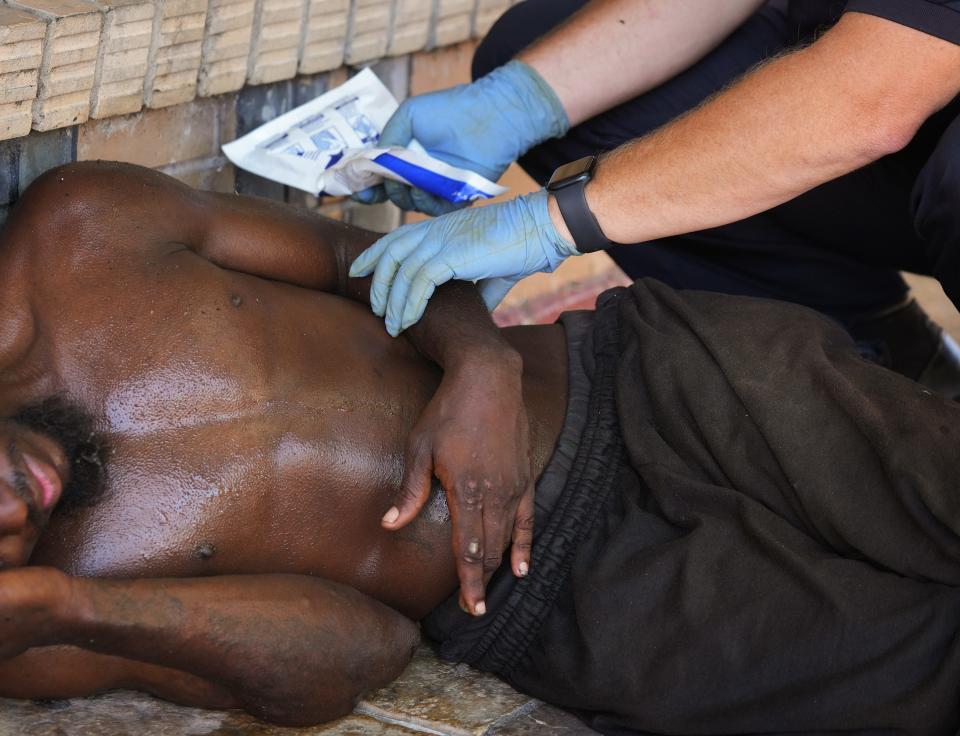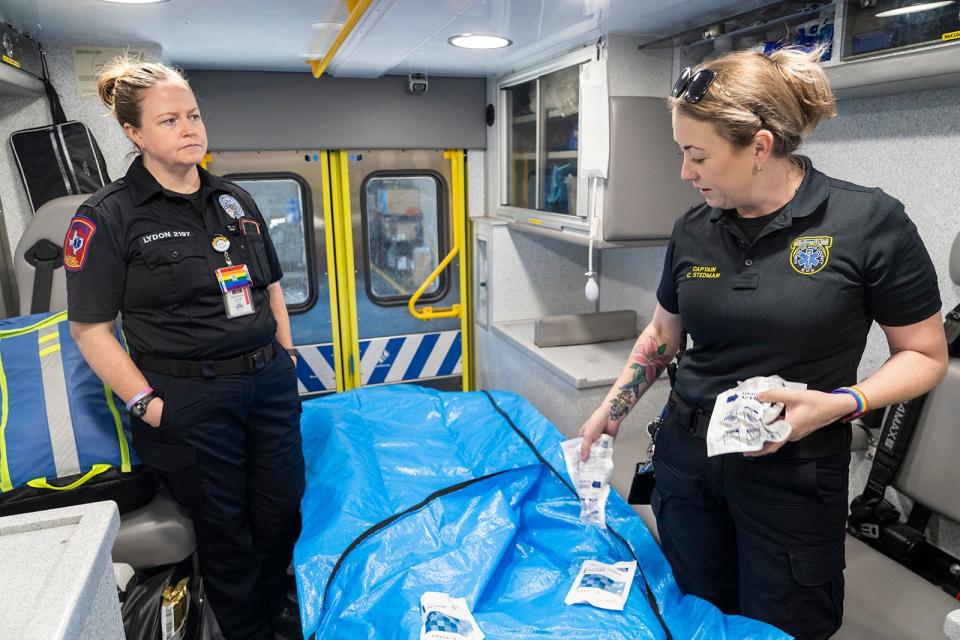This July is setting up to be the hottest on record; Austin gets more heat advisories
The dog days of summer 2023 can't be categorized as Fido. They're more like Cerberus.
Sure, last week we got a "cold front," with a pause in the heat headlines — heat advisories and excessive heat warnings — and temperatures only in the low 100s. But it's still been hot, even by Texas standards.
It's best if you didn't get too comfortable last week, because the heat advisories, and possibly excessive heat warnings, are expected to return most days this week, according to the National Weather Service. Most of Central Texas, including Austin, has been placed under an excessive heat warning for Monday.
More: Too hot! Texans grapple with an unrelenting heat wave
Travis, Williamson, Bastrop and Burnet counties were all under a heat advisory Sunday. Travis County's last heat advisory was on July 23. National Weather Service meteorologist Matthew Brady said the number of heat advisories and excessive heat warnings this year has been higher than normal.
The hottest days are expected to be early in the workweek, Monday through Wednesday, with high temperatures expected to blaze in the 103- to 106-degree range. And the heat advisories and excessive heat warnings could continue through mid-August.
Burning through the records
This month is on track to be the hottest July on record, Brady said, with an average temperature of 90.7 degrees so far. With an excessive heat warning on the only day left in the month, he said, it looks as if this year will take the top spot.
Last year will drop to the second-highest, Brady said, with an average temperature of 90.6 degrees, while 2011 falls to third place with an average of 88.8 degrees.
More: 'It's inhumane': Advocates, families urge Texas leaders to put AC in prisons amid heat wave
Austin added another record this year when Camp Mabry reached 105 degrees for the 10th day in a row last Monday.
However, this summer is only the third-hottest so far, Brady said. With a slightly cooler beginning to June, the average temperature this summer has been 88.6 degrees. The hottest, and not a shock for anyone who lived through it, was 2011, with an average temperature of 89.5 degrees, and the second-hottest was last year at 88.8 degrees.

Continue to be vigilant
You've probably heard the constant calls to stay hydrated, wear light-colored and loose-fitting clothes, limit time outside, take breaks if you're going to be outside, wear a wide-brimmed hat, put on sunscreen and listen to your body for signs of heat-related illness.
Well, this is yet another reminder to do all those things, and don't let your pets walk on the concrete in the heat of the day.
More: Texans, protect your dogs from the heat with these helpful tips — it's the law
Austin-Travis County EMS saw a record number of heat-related illness calls this month. Typically, those calls peak during the first major heat wave in June and then start to plateau in July as people become more acclimated to the heat. That didn't happen this year.
Capt. Christa Stedman with Austin-Travis County EMS said this year is unusual compared with even other hot years, such as 2011. She said that year EMS didn't even respond to a double-digit number of heat-related calls. But this year, the agency surpassed that before halfway through the month.

"This is the heat version of Uri," Stedman said in reference to the winter storm in 2021.
Heat kills more people nationally than any other weather-related factor, according to the National Oceanic and Atmospheric Administration.
The best way to be aware is to know the signs of heat-related illnesses. They usually start with heat cramps, which feel like normal cramps. If you're experiencing them, take a break in the shade or air conditioning and sip some water.
More: Hot days mean Austin emergency rooms racing to cool people quickly
After heat cramps comes heat exhaustion, which includes excessive sweating, flushed skin, confusion and nausea. If you or someone you know is experiencing these symptoms, get to a colder area in the shade or AC immediately and start sipping water.
If left untreated, heat exhaustion moves into a heat stroke, which can cause permanent damage to the brain and other organs, and possibly death. The signs are similar to heat exhaustion but include cold skin, a sudden stop in sweating and unconsciousness. It should be treated in a similar way, and you should call 911 if you or someone you're with is experiencing it.
It's a dry heat, and that means higher fire chances
Unlike the first major heat waves in June, with high heat indexes from high levels of humidity, the heat we're experiencing now is dry.
That high humidity at the beginning of the summer was from the wetter than normal spring we had in Austin, which caused the soil to remain soaked and helped improve our drought conditions for a short time. But that's all dried up now, and drought conditions have worsened, with parts of western Travis County now experiencing extreme drought, according to the U.S. Drought Monitor.
More: Austin issues outdoor burning restrictions due to dangerous fire conditions in Central Texas
It's so dry now, the heat index — also known as the "feels like" temperature — will even show that it's slightly cooler than the actual air temperature, Brady said.
Dry conditions lead to a higher risk of wildfires. Counties west and southwest of Travis County in the Hill Country, elsewhere in Central Texas and in the Rio Grande Valley are all at an elevated risk for wildfires this week, according to the weather service.
This article originally appeared on Austin American-Statesman: NWS: Hottest July on record expected; more heat advisories for Austin

